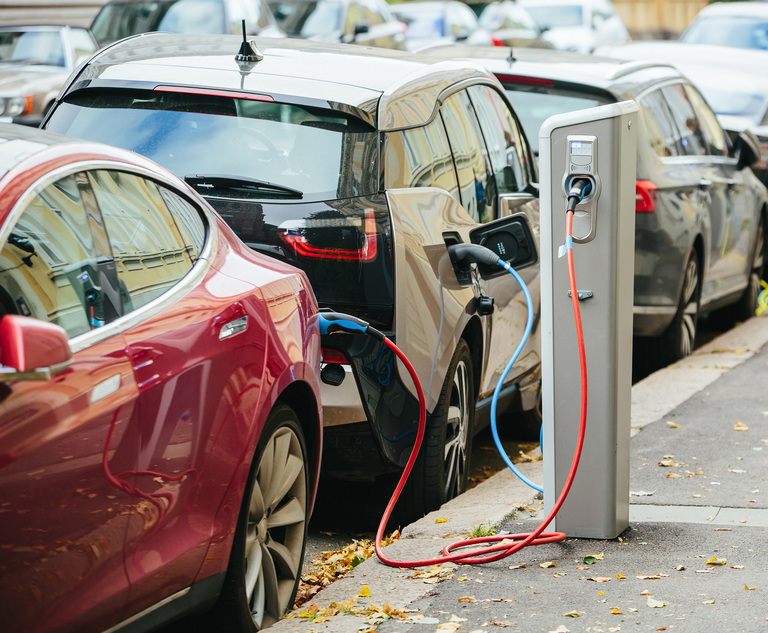We are fielding a lot of questions these days at BloombergNEF about what impact Russia’s invasion of Ukraine will have on electric vehicle adoption. The short answer is that it’s complicated.
When big, fast-moving geopolitical events unravel, it’s best to acknowledge two things up front: first, in cases such as the war in Ukraine, the biggest concerns are humanitarian. An epic tragedy is unfolding and everyone should be very careful not to co-opt the suffering of others as justification for their pet cause. Second, it’s impossible to know exactly what will happen next. There are too many different scenarios for how this could play out, and the conflict is moving very quickly.
In Ukraine, in particular, many forces are pulling in different directions. Here are a few of the moving pieces and my take on what they might mean for the electric vehicle market.
High oil prices. Past spikes in oil prices had limited impact on EV buying, but this time feels different. There are more EV models available and the market has moved beyond the phase where only the wealthiest buyers could afford an EV. Not everyone can make the switch tomorrow, but my sense is that we will see a significant bump in EV sales this year and into next year due to this.
This has a bigger impact in the U.S. than in Europe, where fuel prices were already much higher. Americans tend to be more affected because of a combination of longer driving distances, worse fuel efficiency of the vehicle fleet, and decades of underinvestment in public transit leaving many people with no other option but to pay. Fuel in Europe is also more heavily taxed, so the underlying commodity prices have less of an impact on final retail prices in percentage terms than in the U.S. China also puts a ceiling and a floor on retail fuel prices, blunting the impact a bit.
The elephant in the room here is that most popular EV models are supply-constrained. Many have wait lists of six months or longer, so it’s not clear how much additional demand can be met. Tesla looks uniquely well positioned, with huge new capacity increases coming online imminently. By the end of the year, Tesla will likely be producing more EVs from its new Texas plant alone than General Motors and Ford make combined.
Electricity prices also are spiking, highlighting the interdependence of our global energy system. But most consumers are not directly exposed to wholesale electricity prices and it will take time for those to filter through to tariff changes and bills. There will be an impact, but the gap in refueling costs between an EV and a combustion vehicle is so large that it’s hard to see that rise in electricity prices offsetting the effect high oil prices will have on buyer behavior.
Net impact: Strongly positive for EV adoption.
High prices for nickel and other battery metals. Nickel prices surged last week. We’re expecting them to moderate in the weeks and months ahead, but the overall rise in raw material costs will impact battery prices. We flagged this in BNEF’s 2021 Battery Price Survey, and we’re still expecting an increase in the average price this year. This will buck the trend of decades of falling prices, and likely push EV price parity with combustion vehicles back by a couple years.
Fortunately, there is more flexibility in the battery market now than in the past. Lithium iron phosphate batteries — which use no cobalt or nickel — will get a boost from this price spike and will take a greater share of the battery market again this year. High metals prices will also accelerate the next generation of battery technologies, including sodium-ion.
Internal combustion vehicles don’t escape this unscathed either. The cost of platinum and palladium used in catalytic converters also have risen recently, and aluminum prices are near record highs.
Net impact: Negative for EV adoption.
The economic hit. It’s very hard to know how big the hit will be to the global economy from this war. Consumer sentiment can be fragile, and auto markets are very sensitive to changes in the macroeconomic environment. Overall European auto sales will almost certainly take a hit in what has already been a painful recovery from Covid-19 and the semiconductor shortage. That will in turn drag on the global numbers, though at this stage we at BNEF are still expecting worldwide auto sales to rise this year. An escalation of the conflict could still change that.
EV sales held up much better than combustion vehicle sales during the acute period of the pandemic partially because higher-income households were largely spared from the economic downturn, and stock markets soared on unprecedented financial stimulus. EVs will probably hold up better again in another downturn, but the gap may not be as large.
Net impact: Mixed. Probably net positive for the EV share of car sales globally in percentage terms, but not necessarily in unit sales terms.
Colin McKerracher reports for Bloomberg News.
NOT FOR REPRINT
© 2024 ALM Global, LLC, All Rights Reserved. Request academic re-use from www.copyright.com. All other uses, submit a request to [email protected]. For more information visit Asset & Logo Licensing.


 Tesla cars parked in a Tesla Supercharger pump station in Westminster, California. Credit: TonelsonProductions/Shutterstock.com
Tesla cars parked in a Tesla Supercharger pump station in Westminster, California. Credit: TonelsonProductions/Shutterstock.com




